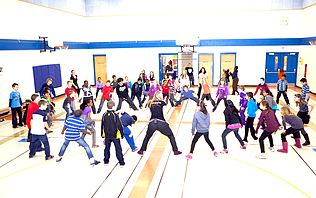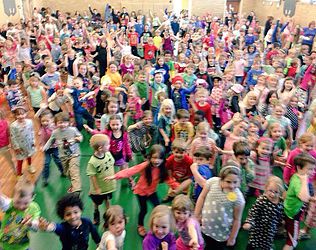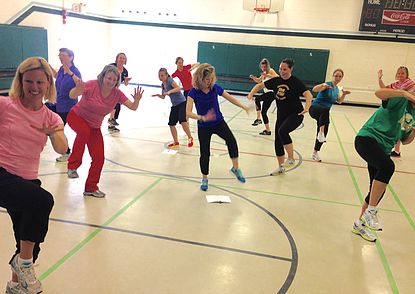About TDfU
Teaching Dance for Understanding (TDfU) was developed by Melanie Levenberg, M.Ed. as a method of teaching dance using a more engaging and interACTIVE approach for physical education and arts educators. The pedagogical approach mirrors Teaching Games for Understanding (TGfU), developed by Bunker and Thorpe (1982), which revolutionized Physical Education by moving away from sport-specific units and towards “teaching games by playing games” to tap into children’s inherent desire to play. Teaching Dance for Understanding is a learner-centered approach that helps educators draw from students’ knowledge, creativity and personal interests, while delivering a purposeful curriculum that develops physical literacy and fundamental movement skills.
Forget 5-6-7-8 or complex choreography, TDfU makes teaching DANCE simple and fun!
TDfU brings a refreshing and purposeful framework to educators who
-
are looking for an engaging teaching style that builds on students’ interest in music and dance
-
are seeking a simple framework to guide curriculum unit planning
-
want to maximize limited time in the gym and keep students ACTIVE as they learn new skills
-
may be intimidated by the thought of teaching dance to their students
Teachers can learn an inquiry-based model that brings DANCE to LIFE through The 6 KEY PHASES of TDfU.


Developing PHYSICAL LITERTACY through DANCE
Physical and Health Education (PHE) Canada defines a physically literate individual as someone who moves with competence and confidence in a wide variety of physical activities in multiple environments that benefit the healthy development of the whole person.
Teachers can have a large impact on developing physical literacy in children and youth by incorporating physical activities, such as dance, during class time and during extra-curricular time.
The choreography used by this TDfU resource is provided by DANCEPL3Y, the world’s leading program in developing physical literacy through dance.
Providing dance opportunities in schools during class and/or extra-curricular time allows students to be active, learn about different cultures, express themselves, work with others, try something new and build community.
TDfU is a learner-centered approach with a focus on student success. The objective is to motivate students through positive experiences with dance as a physical activity, which leads to increased confidence and curiosity in learning about dance and movement. The ultimate goal of TDfU is to equip teachers with effective tools and strategies to help students develop positive attitudes toward life-long active living.
TDfU is focused on the foundations of dance skills (fundamental movement skills) followed by refined and focused study (specific styles and elements of performance) to support physical literacy and create opportunities for cross-curriculum connections and creative expression.
TDfU is inquiry-based: throughout the experiential learning process, self-reflection and instructor-based inquiry allow students to process and integrate their understanding of the various styles and elements of dance.
You can learn more about the value of dance from other schools who are having fun with TDfU on our Success Story page.

